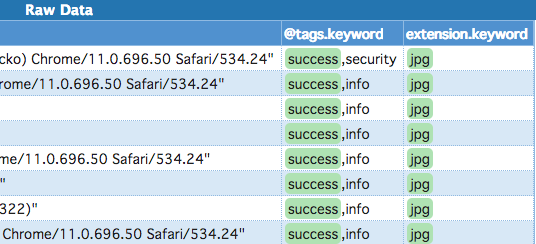Text Search¶
The Text Search visualization is a simple component used to pass filters to an Elasticsearch provider. It accepts expressions in the format of query strings which are powered by Apache Lucene. The following documentation shows how this component is used. You can also watch the video below.
Rendering the Text Search¶
Since the Text Search doesn't display any data it won't query the provider so it doesn't need any groups or metrics. It will only trigger a filter with an expression and will affect the visuals specified by the user.
1 2 3 4 5 6 7 8 9 10 11 12 13 14 15 16 17 18 | |
This will display the following:

Using the Text Search component¶
You can type any supported expression and hit "Enter" or press the "Search" button. Like this:

This will filter all the visuals from the callback function. If within your visuals you have a Raw Data Table, the terms searched in the expression will be highlighted:

To clear the results (remove the applied filter expression) you just need to perform an 'empty' search by removing the expression from the Text Search.
Some notes about the RDT highlighting¶
The highlight is internally implemented by placing a custom tag in the specific terms. The tags are <cf-highlighted-field></cf-highlighted-field>. In order to have the RDT highlighted as shown in the picture above, add the style below to the tag in any css file in our project:
1 2 3 4 5 | |
Styling the Text Search component¶
To modify the look & feel of the Text Search component, you can use the #text-search-input and #text-search-button selectors in your css file. Notice that the CSS selector is by the ID of the HTML component. You can also modify the button inside the component by using these selectors: .text-search-container #text-search-button. Take a look at these examples:
1 2 3 4 5 6 7 8 9 10 11 12 13 14 15 | |
If you created class style for this component, you can set that class directly to the component as shown below:
1 | |